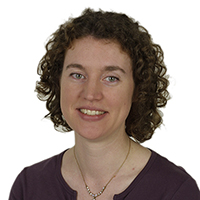Welcome to the twenty-second issue of SIS Editorial article

Find out in this issue of Science in School and learn how to do genetic fingerprinting at school. One of the marvels of forensic science is that it requires only very small samples – and the same is true of microscopy. Did you know that you can easily build your own microscope, following in the footsteps of 17th century scientist Robert Hooke? If this inspires you to build more equipment, you could construct a paper rocket, launch it and analyse its flight.
Another person casting their eyes to the heavens is space scientist Maggie Aderin-Pocock, who regularly shares her love of astronomy with young people. During her frequent school visits, Maggie finds that “the main challenge is trying to get people to realise that science is for everybody.” One group that needs no convincing are the participants in the European Union Contest for Young Scientists, the winners of which receive generous prizes from EIROforum, the publisher of Science in School. In October 2011, EIROforum also demonstrated its commitment to science education by giving hands-on experience of scientific research to 30 European school teachers. You can also learn more about recent research and education activities at the EIROforum members.
The research institutes that constitute EIROforum cover a wide range of science areas, from molecular biology to astronomy, from particle physics to materials science. One such topic is fusion energy, a promising source of energy being investigated at EFDA. Christine Rüth from EFDA explains how a fusion reactor works and what the technical challenges are.
Another promising source of energy is hydrogen – indeed, hydrogen-powered cars are already on the market. Did you know that one potential source of hydrogen is an anaerobic bacterium? One advantage of hydrogen as an energy carrier is that it can be synthesised in remote areas, but given this bacterium’spreference for high temperatures, this could be a challenge in places like the remote Antarctic. In fact, just staying alive there is a challenge, although that has not deterred an intrepid group of Spanish researchers from returning every year to study permafrost and global warming.
From the far south, we jump to the far north to learn about Denmark’s most innovative school, where science is taught not in laboratories but in open spaces. If that is good science, does bad science also have a place at school? And how do you tell the difference on the basis of media reports?
Finally, we are making every effort to continue the print version of Science in School, but we still need your help. Donating via the Paypal button on our website is simple, and every cent we receive goes towards printing and distribution.





